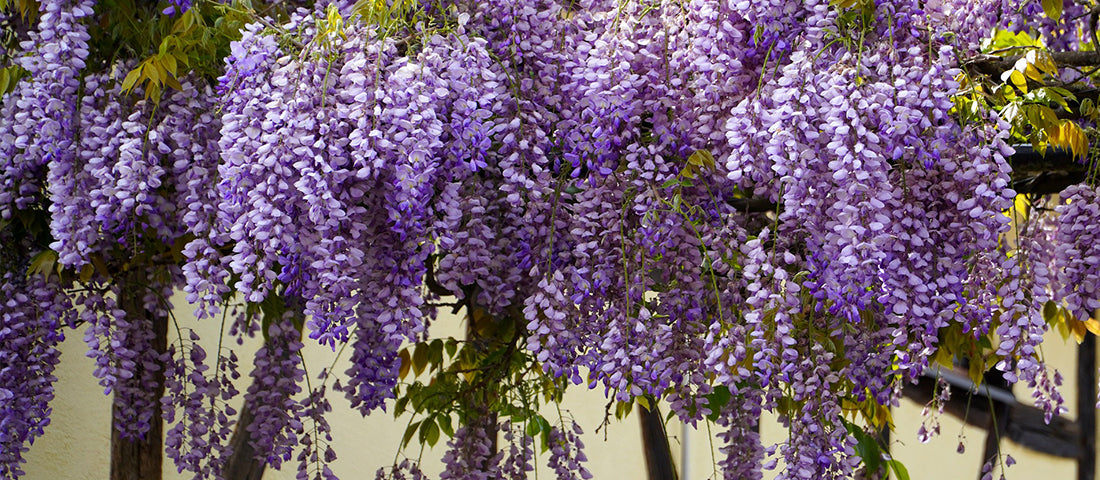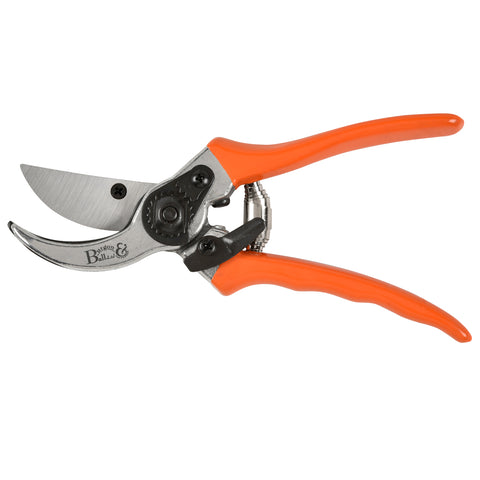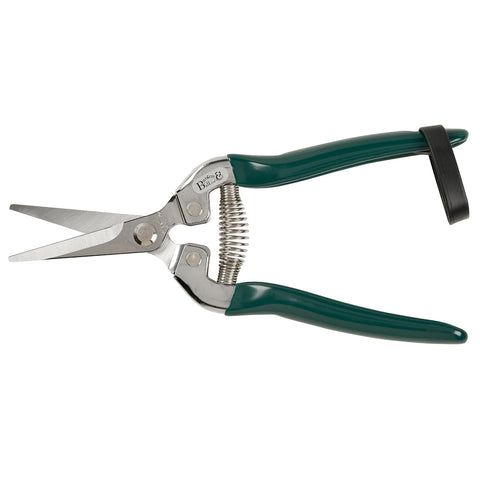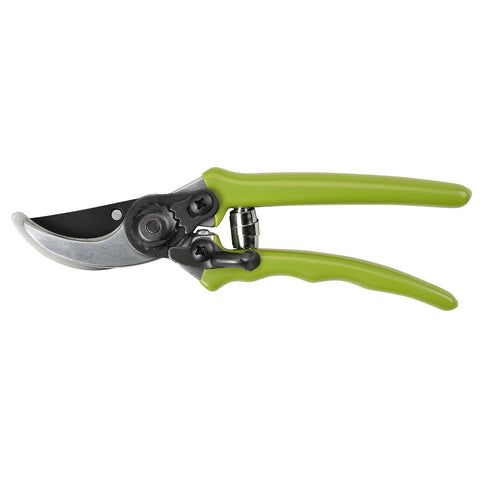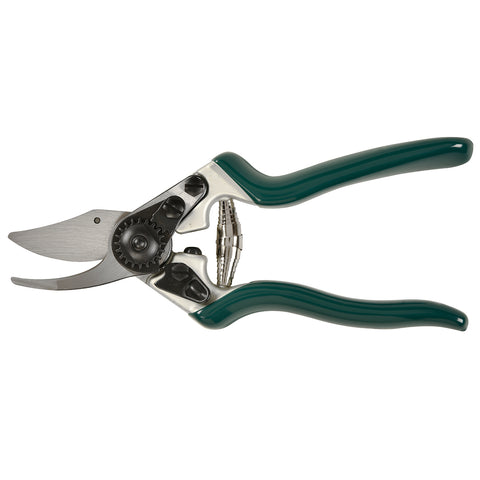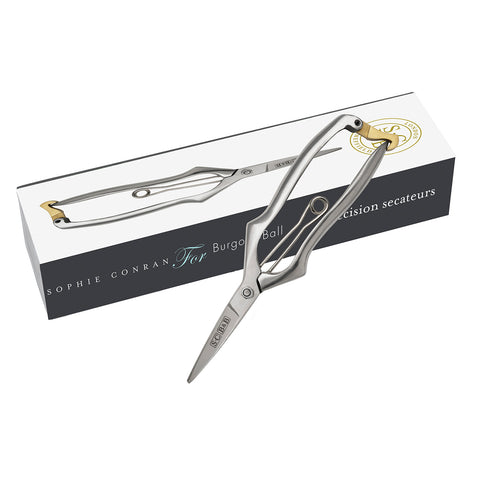
We’re all a little bit in love with wisteria, aren’t we? Whether it’s scrambling up the honey-coloured walls of a Cotswold cottage; frothing over an ancient stone wall; or providing dappled shade as it drapes over a graceful pergola, it manages to combine exuberance and elegance in the most delightful way. It’s with good reason that the hashtag #wisteriahysteria trends each spring on social media.
Wisteria can take over your life – in more ways than one. It’s not uncommon to hear that an innocently-planted wisteria has completely taken over. Much like Jack’s beanstalk, it can run rampant through the garden or over the house, turning day to night as it obscures windows and blocks guttering. To add insult to injury, this rampant growth is often accompanied by very few flowers.
How to avoid this? In a nutshell: wisteria does best when it’s kept in trim. Regular pruning will keep wisteria from taking over, encourage it to put its energy into prolific flowers rather than green growth, and expose the wood to the sun and air it needs to ripen, improving the likelihood of flower formation and creating a strong, robust plant.

How and when to prune
Pruning should take place twice a year, in July or August and then again in January or February.
In summer, after flowering, the plant will put out lots of long, whippy shoots as it tries to expand. The idea at this time of year is to trim these shoots away, encouraging the plant to put its energy into forming flower buds rather than green growth. Simply cut these long whippy shoots back to leave just five or six leaves on the stem, cutting just above that last leaf.
In winter, when the plant is dormant and without leaves, you can take the length of these same shoots back again. In January or February, cut these summer-pruned stems back to leave just two or three buds, cutting just above a bud. Additionally in winter, cut back any long whippy stems that grew after the summer prune – take these younger stems back to five or six buds from the main branch.
This winter prune leaves the plant with good structure for the flowering season ahead, and ensures that those beautiful blooms won’t be hidden by too much green growth.


Pruning wisteria sounds complicated, but it isn’t really. Simply work your way through the plant, trimming each stem as you go, and remembering that keeping the green growth in check is the best way to ensure prolific flowering.
As an aside, if you’re a wisteria fan but are concerned about the regular pruning, we saw a clever way of growing wisteria at the Sir Harold Hillier gardens last summer: growing wisteria on poles. The gardens have a double row of sturdy poles sunk in the ground, around which the wisteria can climb. For the gardens, it’s the perfect way to show a collection of a dozen or more varieties. We thought also that it’s a clever way to enjoy these fabulous plants even if you don’t have much space, or don’t fancy getting up on a ladder to prune at height.
All your work on pruning your wisteria will be more than repaid when those glorious frothy cascades of purple, mauve, pink or white start to emerge in the spring!

